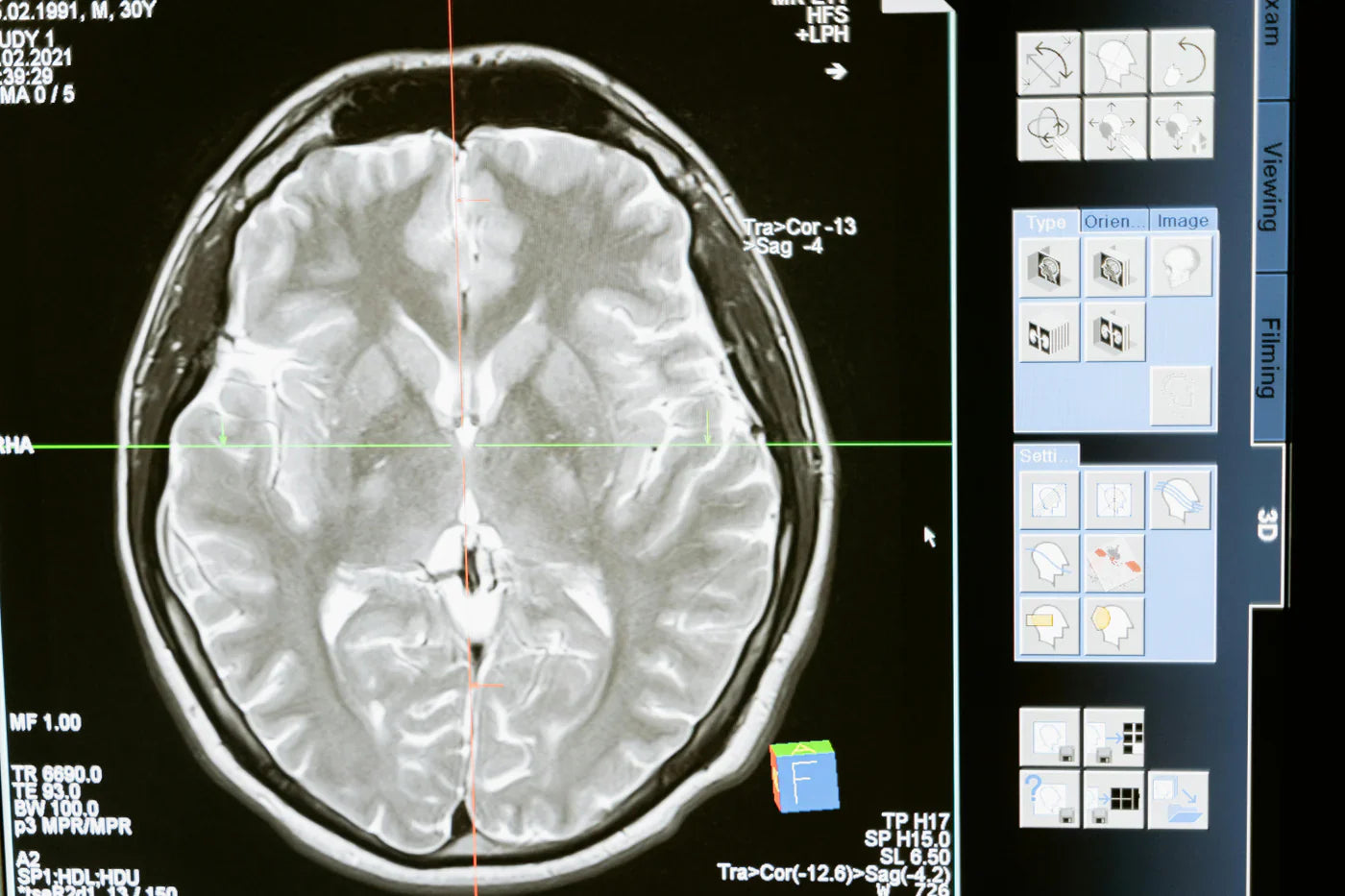
The Problem with Painkillers: They Weren't Made for Women
"A Sick Woman and Her Doctor" by Frans van Mieris the Elder (1635–1681) is one of many Golden Age artworks capturing upper-class women in consultation with their physicians. To 21st-century viewers like us, these portrayals often unmask the inherent shortcomings and gender biases in the medical practices of the time, offering a glimpse into societal norms that shaped medical consultations. For example, these artworks frequently featured pregnant women being examined by doctors, who seemed entirely unaware of the woman's evident pregnancy, underscoring a significant disconnect in understanding women’s reproductive health. Funnily enough, this relationship between medicine and women is not far off from how it is today.
1980? I Wasn't Even Born Yet!
It’s the year 2023. We have cars that can drive themselves, artificial intelligence that can compose symphonies and biotechnology that can edit the human genome, offering the promise of eradicating genetic disorders. Space tourism is no longer a pipe dream but a booming industry, and augmented reality glasses are rapidly blending the digital world with the physical.
Yet, amidst this technological renaissance, a glaring paradox persists. Over 90% of women continue to grapple with menstrual cramps using an unevolved, 1980s-era solution: over-the-counter (OTC) painkillers. This makes even less sense when you look at how severely dysmenorrhea (menstrual pain) impacts many women’s lives - it’s the primary cause of school and work absences among young women, with 14% to 52% reporting they had to skip their usual routine because of crippling pain.
Anyone reading this has probably used OTC painkillers at least once in their life. Painkillers, after all, are the world’s most purchased OTC medication, with the global analgesics market set to reach US$42.65 billion in 2027.
Given their perceived safety, ease of access, immediate relief, and social acceptance, the popularity of OTC painkillers makes sense. However, being the most popular must not be mistaken for being the best. Within the realm of women’s health, the over-reliance on these medications highlights the glaring void of investment and innovation in developing precise, targeted, and holistic treatments to address the underlying causes of menstrual symptoms.
No Sir, One-Size-Doesn’t-Fit-All
Men and women are built differently. At a neurological level, we have different brain structures, with altered sensitivity to various neurotransmitters and hormones like serotonin, gamma-aminobutyric acid (GABA), allopregnanolone, estrogen, and corticosteroids. These obviously contribute to different processing of thoughts, emotions, and levels of pain. Hormonally, men predominantly produce testosterone, influencing muscle mass and aggression, while women's higher estrogen levels impact reproduction and mood. Physiologically, differences in body composition, fat distribution, and muscle mass are evident. These distinctions influence health, disease susceptibility, and responses to treatments. One size cannot fit all, yet with OTC painkillers, their packaging claims they do.
Some explain that the lack of specificity and progress in this space is because of the fact that NSAIDs are effective and would be right to an extent. This is backed by numerous studies, including a comprehensive review by The Cochrane Library which concluded that NSAIDs (ibuprofen, naproxen) significantly outperformed placebos in pain relief. The problem, however, is twofold. One is that there isn’t enough conclusive evidence of how effective they are for managing menstrual health. Secondly, there just aren’t enough viable alternatives to actually test their effectiveness against.
Made for Men, By Men
Traditional OTC painkillers were not made by or for women in mind, and their effects were definitely not tested on women (women were excluded from all clinical trials in the US until 1993). Furthermore, even post-1993, the differential impacts of these drugs on female physiology have been more or less ignored. This is in stark contradiction to the fact that there is a higher prevalence of chronic pain among women. There is also a higher number of exclusively female pain syndromes like endometriosis and primary dysmenorrhea (menstrual cramps), which affect a huge proportion of women. Yet despite these disparities in pain experience, pain research has put little resource and time into investigating the underlying mechanisms of female-specific pain. Doing so would help us create exponentially better and tailored solutions for women.
OTC Painkillers Are Not Always Effective
In the context of dysmenorrhea, clinical studies show (as many women will already know) that the most popular pain relief, NSAIDs, is not effective for all women. In fact, it’s estimated that at least 18% of women obtain no relief from NSAIDs.
To add to that, there are huge discrepancies between the efficacy of the two most common types of painkillers, NSAIDs and paracetamol. Clinical studies have shown that Paracetamol is much less effective than NSAIDs in relieving period pain. Clinical studies have also shown that against general pain, paracetamol delivered no difference in pain relief vs. placebo.
They’re Also Not Always Safe
Our perception of OTC painkillers as safe, literally because they are easy to access, can be misleading. Just as men and women have distinct physiological and neurological characteristics, the impact of painkillers on each gender differs. Although generally undocumented and under-researched, there is a growing body of evidence highlighting the sex differences in the reactions to anti-inflammatory drugs. Most of these studies find that women face a significantly higher risk of adverse effects of painkillers. A study in France, for instance, found that a direct correlation between NSAID exposure and liver injury was found in women but not in men. These side effects only worsen for women who need to treat primary dysmenorrhea or endometriosis, both of which are chronic pain conditions that necessitate long-term drug use at higher doses. This is crucial - the safety of painkillers for menstrual cramps relies on the assumption that they are taken at most once or twice a month, but this is not the case for women with endometriosis and PMDD, who’s pain is medically classified as chronic pain.
Non-Targeted Relief
Painkillers work by blocking prostaglandin production, chemical messengers that get produced inside our bodies when we get hurt, or during menstruation when we shed our uterus lining. They amplify the pain signal in our brains by increasing the pain sensitivity of receptors. Traditional NSAIDs like ibuprofen and naproxen work by inhibiting the activity of the enzyme that produces prostaglandins (COX enzyme), thereby reducing pain and inflammation. However, they do this in a sweeping way, impacting the production of both ‘good’ and ‘bad’ prostaglandins. Protect prostaglandins maintain the stomach lining and support kidney function, which is why potential side effects of painkiller use are linked to gastrointestinal issues and kidney damage.
Why Aren’t We Talking About the Pain-Mood Connection?
An escalating body of research illustrates that dysmenorrhea and depression have a bidirectional relationship. The two conditions can amplify each other – depression intensifies pain, and in turn, pain exacerbates depression, creating a vicious cycle that can severely impact a woman’s quality of life. Statistically, women with dysmenorrhea exhibit a higher prevalence of depression. What more evidence do we need to explore this relationship further? To make things worse, women-specific mental and physical health issues, despite having a high prevalence, are often disregarded in medical communities.
We must consider the entirety of a woman’s symptoms to formulate long-lasting solutions. Traditional painkillers, targeting only prostaglandin production, are ineffective and unsuitable. Acknowledging that targeting pain or mood in isolation is insufficient can pave the way for comprehensive research and enduring relief. This is the only way forward to ensure a serious improvement in the quality of life of women.
Make it Make Sense
In the face of all the technological and medical progress we have made to date, the status of women's pain research and management doesn’t make sense. This is exactly why, as a science and research company first, we took it upon ourselves to delve deeper into the mind-body connection of pain, mood, and our menstrual cycles. This is what we have discovered over the past 4 years of academic research, conducting clinical trials, and working first-hand with PMDD and endometriosis patients:
- It’s all in your brain, and you can wire your brain to perceive pain differently- we aren’t the first to highlight this, with many up-and-coming long-term solutions for chronic pain looking at cognitive behavioural therapy.
- Women need holistic solutions, treating pain without addressing mood often leads to an exacerbation of one and a feeling of hopelessness in patients.
- Neurotechnology can help, and it’s likely the future of menstrual care - targeted treatments like transcranial direct current stimulation that can be done at home in as little as 20 minutes a day show real promise, with minimal side effects. This is exactly why we built Nettle.
- More research is needed. Period.
We want to make it clear that we are not advocating against the use of painkillers. Nor are we advising that they be completely avoided - our role isn't to provide medical advice but to offer tools and resources that facilitate more informed conversations with healthcare professionals. Our stance isn’t anti-painkiller; it’s pro-innovation and pro-specificity.


